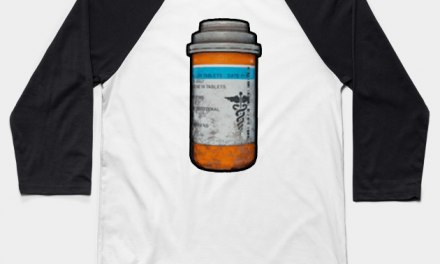Now it’s a lawsuit in Federal Court, filed near the end of last year, that will finally go to trial. This one is of interest because it involves two Ohio counties who seek $1 billion dollars each in damages from a collection of America’s biggest pharmacy chains. And yes, it’s about opioids. And the origins of the painkiller epidemic.
Which, by the way, is about to enter its third decade.
Pharmacies face 1st trial over role in opioid crisis
The weird part is that the big drugstore chains, including some of the defendants in this action, have already filed another lawsuit seeking to blame the prescribing physicians — claiming the whole thing was the doctors’ fault. A link to a post from back then:
Given all that we’ve written before, I suppose that makes this an “update of an update” in a continuing legal drama. It has to end sometime, doesn’t it? The opioid epidemic itself has moved well beyond prescribed opioids. In fact, there’ve been two more ‘waves’ to date — one featuring heroin, another fentanyl.
Who knows? More could be on the way.
This trial will be described as a ‘bellwether’ in terms of setting precedents for other trials that may be yet to come. It’ll take place in Federal Court, in Cleveland. The two Ohio counties wills serve as plaintiffs.
The pharmacies who stand accused include CVS, Walmart, and Walgreens. Rite-Aid, another giant, settled. As noted, they’ll argue that once the doctors wrote the prescriptions, there’s no way their pharmacists could have been expected not to fill them. The attorneys for the plaintiffs will counter that not only could they have refused, they should have done just that. Or at the very least, taken clear steps to address the problem.
I’m told company pharmacists did complain about certain physicians who they felt were overprescribing, but were effectively ‘blown off’ by their Corporate masters. If that’s true, it could seriously undermine the defense.
Though some prominent Big Pharma firms and large distributors have chosen to settle, the remaining defendants appear ready to play hardball. I doubt any knowledgeable observer expects either plaintiff to get anything like a billion dollars. Still, these are not wealthy counties, and they can’t afford the burden of cleaning up this mess without significant outside support. They’d prefer it to come from the drugstore chains instead of the taxpayer (although inevitably Joe Public will wind up with some of the bill.)
That suggests they may not settle as easily as the others. Can’t afford it.
Anyway, the trial projects to last around six weeks. Once the verdict is in, we’ll revisit things, see where we stand.
I think everyone by now understands the role of big corporations, eager to boost revenue, who developed, manufactured, and marketed their products. And distorted, apparently consciously, the level of safety they could provide to consumers.
The consequences of such behavior can be enormous. For instance, the US government claims that “roughly 21 to 29 percent of patients prescribed opioids for chronic pain misuse them.” That’s a disturbing number, given exactly how many millions of opioid meds are prescribed for chronic complaints of one sort or another.
Those same government agencies estimate that between 8 and 12 percent of people who take an opioid for chronic pain go on to develop an opioid use disorder. The longer someone keeps taking the opioid, the greater the risk for an OUD.
Not only that, but some 4 to 6 percent who misused prescription opioids will eventually transition to heroin. That’s a truly impressive number. Especially when around four in five current heroin users report their addiction began with prescription painkillers.
Don’t forget, we’ve been told (repeatedly) that some 100 million Americans suffered from chronic pain. That translates to potentially 8-12 million people with an OUD. More than half a million of whom would eventually become converts to heroin.
That’s more dangerous now, given the predominance of fentanyl on the streets.
It’s an ugly picture no matter we describe it. And if indeed the pharmacies filled the prescriptions, some of which were quite outlandish, then I imagine most Americans would agree they should pay up.
But will that happen? It’s yet to be determined.













